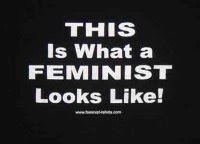
By Fabulously Feminist
Upon reading the table of contents of Feminist Theory Reader: Local and Global Perspectives, edited by Carol R. McCann and Seung-Kyung Kim, I first noticed many familiar names and concepts. More importantly however, it was the names and concepts that were unfamiliar which revealed one of the book’s main priorities to me. This priority was to give a voice to women marginalized by the dominant normative white, educated, middle class, Western woman’s voice that tends to be heard. However, the editors of Feminist Theory Reader did seem to make the assumption that the reader holds some basic knowledge of feminism to frame their understanding of the essays. Nonetheless, my expectations for this book are high. Having studied Radical feminism, Ecofeminism, Marxist feminism, Phenomenological feminism, etc. and having read some of the works of bell hooks, Audre Lorde, and Judith Butler, I was/am expecting to build on my current knowledge base and learn more about unfamiliar perspectives while trying to better define and critically examine where my feminist beliefs lie.
Shifting from my impressions to examining the overall project of the Feminist Theory Reader, the first thing that struck me was that this book is an edited collection rather than an anthology penned by one or more authors. The significance of this can be witnessed through a broader perspective being offered where an author’s explicit and implicit biases are lessened. Additionally, as an edited collection the Feminist Theory Reader is significant in that it invites the reader to think more critically by showing them different ideas rather than simply telling them “this is how it is, this is what you must know”. By looking at the broader perspective being offered in this book and by the stress on critical thinking, one begins to get a sense of why this book was written.
In 2003, after roughly seven years of personal and professional collaboration, Carole R. McCann and Seung-Kyung Kim’s anthology was published (McCann and Kim ix). With the rise of globalization in the 90s, McCann and Kim wanted to change with the times (implicit goal) and bring a more global perspective to feminism inside and outside of the classroom. However, their efforts were hampered because they could not find a good anthology on feminist theory that ventured outside of the perspective of Western feminists. As a result of this, they decided to create their own reader which would be an intellectual tool used to look at multiracial feminist’s “conversations and debates” within the United States and place them in a global context (McCann and Kim 2).
Through this book, Carole R. McCann and Seung-Kyung Kim were implicitly trying to dispel the myth of the universal oppression, i.e. that all women experience oppression the same. Instead they structured the Feminist Theory Reader to meet the needs of women’s whose voices weren’t being heard by presenting essays in a political context that reveal the interlocking oppressions (class, ethnicity, race, religion, sexuality, geographic locations, etc.), and the shifting and multiple sites of feminist identity. In addition to this, throughout the three sections of this book, McCann and Kim presented a balance of old and new writing and in doing so did not completely remove the voice of the normative white, educated, middle class, Western woman; nor did it relegate chapters simply on the basis of identity, i.e. by having one chapter that deals with global feminism, one chapter that with African American women in the United States and so forth. All of these aspects, plus McCann and Kim’s infusion throughout the book of the theoretical concepts of gender, difference, women’s experience, and the personal as political shows the great degree to which they “attempted to disrupt the normative feminist subject by situating her within conversations that include many voices inside and outside the United States and that analyze in the context of race, nationality, class and sexuality” (McCann and Kim 5).

















No comments:
Post a Comment